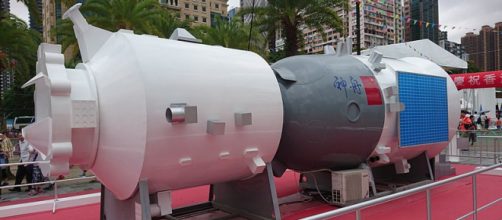Tiangong-1 was the first Space Station that china sent up as a prelude to more such launches. The basic objective was to get a firm foothold in the specialized branch of space research dominated by NASA. However, China has suffered a major setback as it lost control over the Tiangong-1 which is now likely to crash into Earth.
Sky News reports that the Chinese spacecraft is expected to be traveling at an unbelievable speed of seven kilometers per second through Earth's atmosphere. The possibility of the bus-sized spacecraft surviving the high speed is remote, and the debris could end up in a band of 43 degrees latitude either side of the equator.
It is a great blow
The loss of Tiangong-1 will be a great blow for the plans of China to surge ahead in the race for supremacy in space research. The rocket engines of the space station may not burn out totally but some portions could crash towards the planet's surface. There are no means of predicting when and where the debris could land, and everyone must be prepared.
European Space Agency (ESA) has assured that the chance of being hurt by the space debris is practically nonexistent. Until now, there is no record of any casualty from space debris.
Details of Tiangong-1
China sent Tiangong-1 to set the pace for subsequent launches in order to gain expertise on various aspects of space research and compete with other established players.
However, the out of control space station will force the authorities to fine tune their subsequent activities.
According to Space, the Chinese space station was launched on Sept. 29, 2011. It settled into an orbit about 217 miles above Earth. In comparison, the International Space Station is at a higher orbit of 250 miles. The life cycle of Tiangong-1 was for just two years after which it was put into the “sleep mode.” In March 2016 it started malfunctioning and stopped transferring data, after which it was disabled. Therefore, controlled reentry of the space station into the Earth’s atmosphere was out of the question since it had become just another piece of space debris.
Tiangong-1 is made up of two modules – one portion houses the solar-power and propulsion systems, the other is identified as the living area for astronauts to carry out scientific tasks.
A robotic craft called Shenzhou-8 had docked with it in November 2011 soon after the space station was launched. That was followed by a couple of manned missions of Shenzhou-9 in June 2012 and Shenzhou-10 in June 2013. It was a good start for China, but it has lost the momentum.


